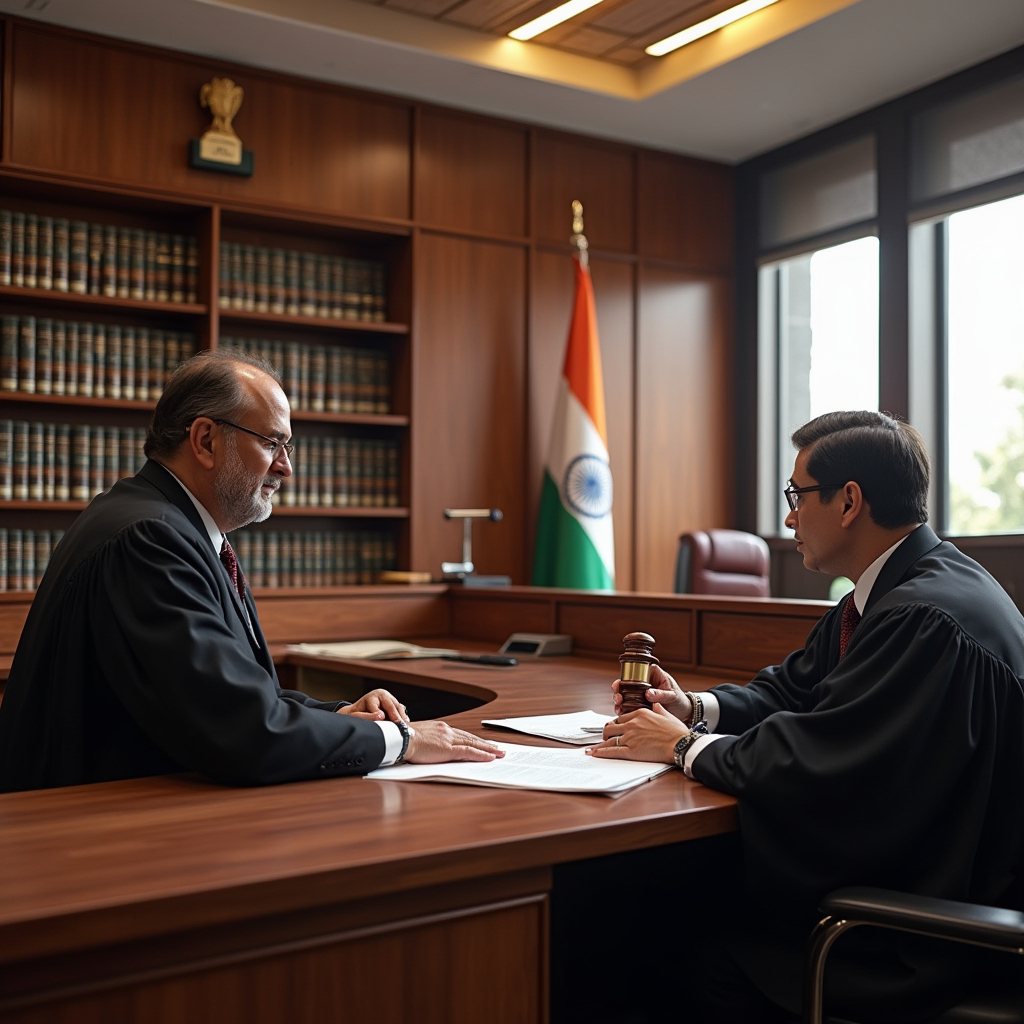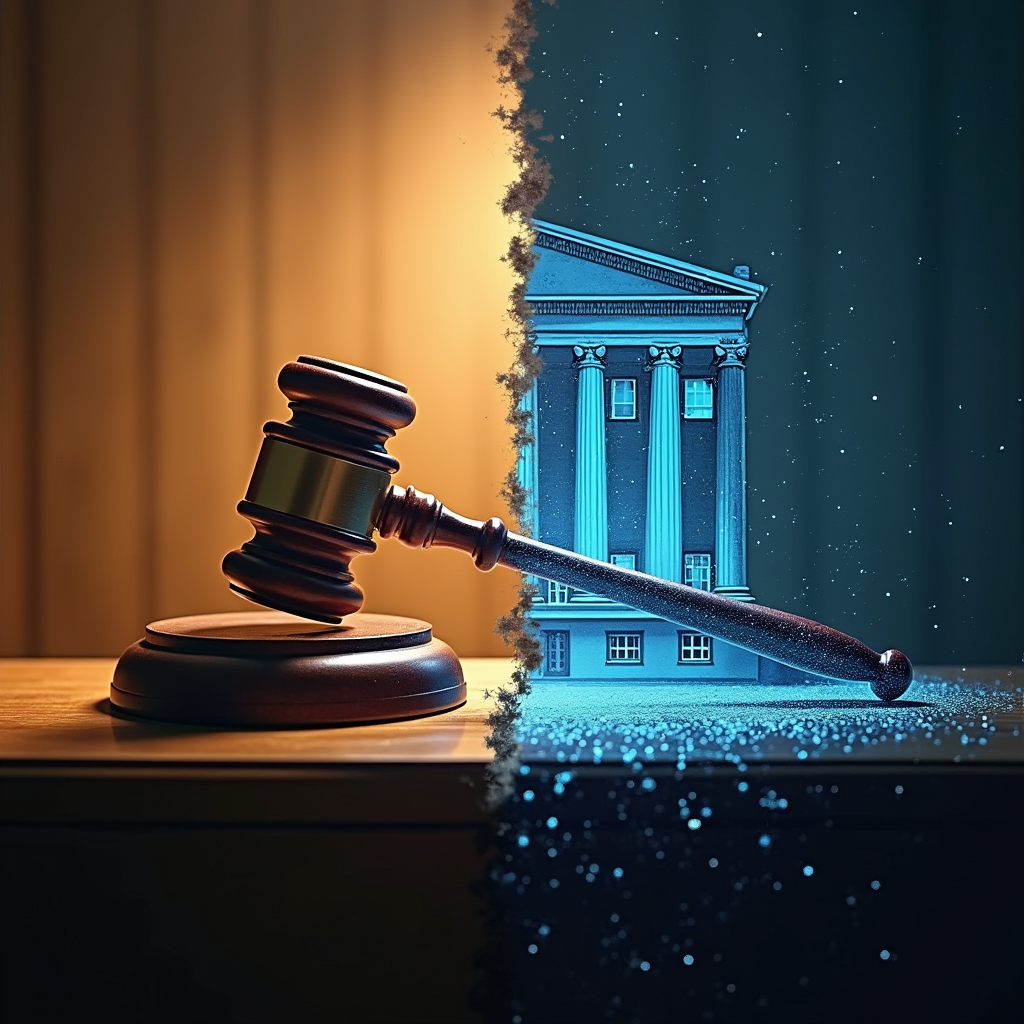This article has been written by Oishika Banerji of Amity Law School, Kolkata and has been further updated by Nimisha Dublish. This article provides an analysis on the topic of whether watching porn is a crime in India or not. The article delves into various factors that led to this crucial question. Various case laws that have helped understand what amounts to the illegality of watching or even circulating porn have been discussed further in this article.
Table of Contents
Introduction
The term ‘sex’ has been a very controversial topic in Indian society. The term is often linked to a person’s immoral and salacious values. It is frequently related to the immorality and indecency of an individual. Indian laws aim to criminalise selling, distributing and publicly displaying obscene sexual or pornographic content. The term “pornography” can be defined as the reporting or portrayal of sexual actions in order to produce sexual excitement through books, films, or other media. Pornographic websites, pornographic material created using computers, and the use of the internet to download and transmit pornographic films, texts, photographs, and photos, among other things, fall under this category. Put simply, watching porn in India privately does not fall within the ambit of an offence under Indian penal laws but there are certain limitations to the liberty of watching porn that the Indian judiciary has laid down time and again.
The question that always remains at the heart of the debate is whether the government can restrict citizens from publishing or viewing pornography or whether this would amount to an unjustified violation of basic human rights/freedom. Many traditional debates on pornography concern religious conservatism and feminism. They believe that porn lacks intellectual merit and is harmful to viewers. They sincerely believe that it harms the social fabric of society at large.
However, the contradiction to this says that pornography is a great expression of art and makes a positive contribution to sexual freedom and liberation. The article aims to discuss how a balance could be attained between what is publicly moral and what comes under individual liberty. The article further dives into the legal aspect of whether the laws made on pornography are viable and sufficient enough to deal with the present scenario of Indian society.
What is pornography
In today’s era, pornographic content is present everywhere and has become pervasive. This is because of the fast-growing internet access and technological trends that make it super easy to access these kinds of content. The word pornography is derived from the Greek words ‘porne’ and ‘graphos’. The word ‘porne’ stands for prostitute, female captive or harlot. The word ‘graphos’ stands for writing about or description of. Pornography incorporates any kind of video, picture or movie that contains sexually explicit content or acts that are deemed to be indecent by the public at large.
Legally, pornography is something that is also obscene. Pornography is mainly the depiction of an act, not the act itself. This means that it is an artistic way to showcase the act. Pornography has been further divided into two types nowadays, namely softcore pornography and hardcore pornography. However, softcore pornography does not depict the actual penetration, while hardcore does.
Its origin can be traced back to ancient civilisation. At that time, erotic art and literature were prevalent. In ancient Greece and Rome, the depiction of sexual art on walls and pottery was considered to be aesthetic and erotic. Similarly, many ancient religious places also have various sculptures depicting sexual activities as part of religious and social narratives. India’s cultural history has various references to sexual expression that are evident from writings such as the Kamasutra and the depiction of erotic sculptures in religious places. Despite this, Indian society’s attitude towards pornography is highly influenced by morality and religious conservatism.
It can be seen that the evolution of pornography majorly accelerated when the printing culture came into being. It was at that time that multiple copies of an expression could be made and circulated in public. The advanced printing technology allowed a wider distribution of explicit content. As time passed, advancements in photography, filmmaking and digital technology made pornography more accessible to the public than ever before.
From a legal perspective, defining pornography is not easy. It has been a challenging task. The legal status of the term pornography on a global level varies widely. Some prefer the implementation of stringent laws, while others promote freedom of expression while keeping in mind certain boundaries. However, the advancement of internet access has made it further complicated to determine and disseminate pornography across borders.
Comparison between pornography and obscenity

Both the terms pornography and obscenity are used interchangeably. However, it is important to know that obscenity is a wider term than pornography.
| S. No. | Basis | Pornography | Obscenity |
| 1. | Definition | Pornography is explicit content that is created with the intention of stimulating sexual desire. | Obscenity is not a form of content; rather, it is a quality or state of something that appeals to prurient interests and lacks literary, political, artistic or scientific value. |
| 2 | Legal status | It is legal or regulated, depending on the jurisdiction under which it comes. | It is typically considered to be illegal |
| 3 | Main focus | It focuses on the sexual content and its impact on the viewers. | It is concerned with public morality and decency. |
| 4 | Criteria for determining | It involves the analysis of the intent and context behind the content, keeping in mind its impact on the viewers. | It is determined by community standards and context. |
| 5 | Freedom of Speech | It balances both freedom of speech and societal values. | It often tends to restrict the right to freedom of speech because of the context of the content. |
Internet presence of pornography
Pornography has significantly grown its presence on the internet. It constitutes 30 percent of all the online content present on the internet. This percentage is very high as compared to the contribution of other content on the internet. The data is only about the content available on the surface web. There is another side that we all know, i.e., the dark web. It is alleged that a substantial portion of pornography exists on the dark and deep web as well. However, only 10% of this is accessible through conventional search engines. Moreover, these search engines not only contain pornographic content but also illegal and disturbing content, such as child pornography.
In 2005, the volume of searches on the internet for pornographic content surpassed 2 billion. This indicates that there was a high demand for such content at that time. In today’s time, nearly 20% of all mobile searches are related to pornography. It was found in a study that approximately 28,258 users watch porn every second and the number is still increasing. The studies have found that a significant number of adolescents are exposed to pornography at an early age. By the age of 18, almost 90% of boys and 60% of girls have seen pornographic content on the internet. This has raised concerns related to the child’s attitude towards sex, relationships and mental health. Many adolescents get addicted to such content, which leads to the deterioration of their mental health as well.
It has been seen that in around 56% of divorces, there is one spouse who is obsessively involved in watching porn online. It is noticed that most of the time it’s the man who is obsessively into watching pornography online. If we compare this situation to the faithful spouses who haven’t divorced, it can be seen that adulterers are more than twice likely to be involved in watching porn online.
As per Internet Safety 101 organisation, porn sites have more visitors than Amazon, Netflix and Twitter combined every month. It was also reported that 88% of porn content contains violence against women. With every passing year from 2005 to 2013, the keyword ‘teen porn’ has been searched so many times that the number has tripled to 5,00,000 per day.
Effects of watching pornography
- Excessive consumption of pornography can lead to unusual expectations related to real-life sexual relationships. This, in turn, leads to dissatisfaction and unrealistic beliefs about sexual intimacy.
- Viewing pornography regularly may lead to addiction. This addiction starts to interfere with daily life, relationships, and responsibilities.
- When a person gets addicted to pornography and is regularly exposed to explicit sexual content, he/she might become desensitised to sexual stimuli.
- When an adolescent is exposed to this world of idealised and unrealistic body types in pornographic videos, this can lead to low and poor self-esteem issues as well.
- There is a correlation between huge pornography consumption and an increased rate of declining mental health.
- Some genres of pornography depict violence and aggression, which could potentially influence attitudes towards violence and consent.
- Excessive porn addiction may lead to social withdrawal, isolation and difficulty in healthy interpersonal relationships.
Pornography and Indian laws
Certain sexually explicit, pornographic, or obscene images that are “lascivious or appeal to the prurient desire” or “tend to deprave and corrupt humans” are punishable under Indian law. The facts and criteria set out in the following legislation decide whether such activities are legal, prohibited, or punishable:

1. The Indian Penal Code, 1860 (IPC).
2. The Information Technology (IT) Act of 2000.
3. The Protection of Children from Sexual Offences Act (POCSO), 2012.
4. Women’s Indecent Representation (Prohibition) Act of 1986 (IRWA).
However, while these laws specify the events and situations that trigger punishment, they do not define “pornography” or “obscenity” precisely and specifically. This causes uncertainty when determining whether a person’s activities, such as the ownership, creation, or distribution of pornographic content, are illegal because not all pornographic material is obscene and hence receives varied, or frequently no penalty. The two terms have different subjective meanings that have changed over time with changing society and mindsets. Furthermore, there is the issue of how the word “sexually explicit” is interpreted, which determines the type of punishment a person receives.
Information Technology (IT) Act, 2000
Many countries have banned and penalised pornography. However, there are some who haven’t done this yet. As far as the Information Technology (IT) Act, 2000, is concerned, it has neither banned nor legalised pornography. However, it aims to restrict or prohibit the viewership and downloads of pornographic content.
The transmission of photographs of “a private part of any person without his or her agreement” is covered under Section 66 E. For the same, the penalty is either three years in prison or a fine of not more than two lakh rupees, or both. In the landmark judgement in Justice K. S. Puttaswamy (Retd.) and Anr. vs. Union of India and Ors (2018)., the right to privacy was recently ruled to be guaranteed as a basic right and safeguarded under the Right to Life in Part III of the Indian Constitution. Sharing any material that violates a person’s privacy is consequently a violation of Article 21 of the Indian Constitution.
The publication or transmission of obscene material is covered by Section 67 (described as “any material which is lascivious or appeals to the prurient interest or if its effect is such as to tend to deprave and corrupt persons”). The first conviction carries a sentence of up to three years in jail and a fine of up to five lakh rupees, with successive convictions carrying a sentence of up to five years in prison and a fine of up to 10 lakh rupees.
Publishing or sending anything that depicts sexually explicit acts or conduct is punishable under Section 67A. On a first conviction, the penalty is up to five years in prison and a fine of up to 10 lakhs. The current clause applies since the Bois Locker Room event involved the exchange of modified photographs of girls.
On a first conviction, Section 67B carries a penalty of up to five years in jail and a fine of up to 10 lakhs. This clause encompasses the creation or dissemination of any digital text or photos that show minors “in an obscene, indecent, or sexually explicit manner,” not merely depictions of children in sexual acts or conduct. It’s worth noting that the current situation involves the distribution of indecent or private photos of young girls. As a result, the following section can also be used as a resource. Furthermore, many of the comments and conversations related to obscenity may be included in this area.
Section 79(3) (b) states that if mediators fail to “immediately” remove or immobilise access to offensive material “upon receiving actual knowledge, or on being notified by the government or its agency that any information resides in or connected to a computer resource forbidden by the mediator” was being used to commit unlawful acts, they will not be exempt from liability. Furthermore, according to the Information Technology (Intermediary Guidelines) Rules, 2011, mediators must warn “users of computer resources” not to “mass, modify, publish, transmit, display, upload, update any information that is blasphemous, defamatory, obscene, grossly harmful, harassing, pornographic, libellous, pedophilic, invasive of another’s privacy, hateful, ethnically offensive,” and “harm minor in any way.”
Cyber pornography in India
In simple terms, cyber pornography is the act of creating, displaying, importing, distributing, or publishing pornography through the use of cyberspace. Traditional pornographic entertainment has been mostly displaced by online/digital pornographic entertainment since the advent of the internet. Cyber pornography is illegal in several countries and allowed in others. This is a grey area of the law in India, as defined by the Information Technology Act, 2000, where it is neither unlawful nor permitted. Downloading child pornography via the Internet is likewise punishable under the Information Technology Act, 2000.

Child abuse, aggression against women, rape, inequity, relationship and family collapse, adolescent criminality, promiscuity, and sexually transmitted illnesses are among the concerns that cyber pornography contributes to. India’s archaic laws have been challenged by cyberspace and the pornographic material disseminated through it. Because of the lack of jurisdictional borders, the massive volume of traffic that the internet can manage, and the possibility for anonymity, there is no way to govern what appears on the web at the press of a mouse button. A cyber cafe owner formerly had no accountability, but after the passage of the Information Technology Amendment Act, 2008, their duties have only grown.
The act of collecting and keeping cyber pornography is not illegal, but if it includes kids, it is punishable by up to five years in prison and a fine of up to ten lakhs. Child pornography on the internet is prohibited. Operation Ore, one of the most well-publicised captures of child pornographers, was launched in May 2002. The FBI sent the British police force credit card information, home addresses of thousands of pornographers browsing a British child pornography site, and email addresses after gaining access to them. Following the arrest of a computer specialist in Texas, an international investigation was launched, and Thomas Reedy was sentenced to 1,335 years in jail for his involvement in a pornography ring. Teachers, child-care professionals, soldiers, physicians, social workers, and 50 police officers were among the approximately 1,300 additional culprits arrested.
Challenges in regulating cyber pornography
It is challenging to regulate cyber pornography. The global internet network is highly decentralised. There is no individual organisation or entity that governs and controls the content published or circulated in India. People tend to use proxy servers, hide their IP addresses and identities in order to access pornographic content on the internet. There are so many websites and servers in India itself on which such explicit content is available. These proxy servers even help people access banned content/website in India. Hence, it is a huge challenge and almost impossible to regulate such a large number of proxy servers.
Even if we succeed in controlling the porn available on the website, it is not the only platform through which explicit content is circulated. There is a technology known as BitTorrent technology. With the help of this, even if the content is banned or inaccessible in India, users can also download the banned pornographic content. EMule and BulletinBoards are yet another way to share and download files and hence, through this source, porn can also be shared. EMule is an open-source used to share files. It started back in 2002 and is used on Microsoft Windows. It is also a free application. BulletinBoards is yet another way of sharing and uploading content virtually.
Role of internet intermediaries in cybercrime
An entity that operates as a facilitator of the flow of data on the internet is known as an intermediary. These intermediaries play a crucial role in regulating the content, which includes pornography. So in order to understand the roots from where such content is circulated, it is essential to know about how an intermediary functions, its roles, what it is, and its duties, liabilities and responsibilities as well. In reference to Internet intermediaries, it can be Telecom Service Provider (TSP) or Internet Service Provider (ISP). These provide internet services to the users and can also host a web page or provide a space on the servers to store data. They play a vital role in shaping and forming society, especially for those who are heavily dependent on the Internet for all sorts of communication and entertainment.
Indian legislators felt it was important to define intermediaries in the legislation. Section 2(1)(w) of the IT Act defines an intermediary as any person who has received the information or communication on behalf of the other person and stores or shares the records or services for the record. The definition of intermediary covers telecom service providers, internet service providers, search engines, online auction sites, online marketplaces, web hosting service providers and cyber cafeterias.
The role of these internet intermediaries is not restricted to the above. They also have certain duties to fulfill.
Duties/responsibilities of internet intermediaries
The Information Technology Act, 2000, has not directly defined the duties or responsibilities of an intermediary but there are certain duties that can be derived from the essence of the Act and can reasonably be drawn from a basic human perspective.
- First and foremost, it is the duty of the intermediary to moderate and monitor user-generated content on the internet. A robust system must be in place to prevent the hosting or dissemination of illegal pornography.
- It must be ensured that every website and content available on the internet is as per the rules and guidelines prescribed by the central government. The pornographic content that violates such guidelines on the grounds of obscenity and indecency must be put down.
- The terms of use of the intermediary must be displayed on the website, especially in cases of access to or usage of services.
- Government shall be given adequate assistance by these intermediaries with respect to interception, monitoring or decrypting the information so generated, transmitted, received or stored in any electronic/computer device.
- They must not publish or transmit any material that is prurient to the interest of the public and affects the modesty of a person.
Liabilities of an intermediary
The liability of an intermediary is limited only to the extent to which the content is prohibited by law. There are times when these intermediaries really do not have control over the content that is shown through them. It is the actual user who has control over the content. So in these cases, it is up to the user to publish illegal content on websites and intermediaries have no role to play .There’s a debate over the subject of whether it should be the user who uploads explicit content or the intermediary that should be held liable. Ideally, what happens is that it is the user who uploads the content on these online platforms. Intermediaries are just platform providers. It is hard to always keep a check on user activity but at the same time, it is not impossible. But still, it is the user who should be more responsible and aware while uploading something. Therefore, when it comes to who shall be more liable for the act of uploading such obscene content, it should be the user, unless the intermediaries have a considerable amount of editorial control over such uploaded content. Section 79 of the Information Technology Act, 2000, contains certain situations where the intermediary won’t be held liable. These are as follows-
- The intermediary has complied with due diligence and guidelines set by the central government.
- The intermediary has not conspired, abetted, aided or induced the commission of an unlawful act.
- When the intermediary has struck down the illegal content after being notified by the government.
Possible ways to regulate pornography
Age verification method
It is important to implement stricter age verification mechanisms, such as verified accounts that are directly linked to the official identification or biometric authentication of the user. This will ensure that the user is not a minor who is trying to access explicit material online.
Education and awareness campaign
Both parents and children must be educated about the explicit content available on the internet and made aware of what is illegal content and why one should avoid accessing it. They must be educated about the risks and consequences attached to it. Both healthy and responsible internet use practices must be promoted amongst people, especially children. This will not only help them become aware of the potential harm of such illicit content but also mitigate the negative effects of it.
Introduction of special Top-level Domains (TLDs)
The introduction of special Top-level Domains (TLDs) would help in filtering and identifying the content source. TLDs such as ‘.xxx’ or ‘.sex’ or any other TLD that the authorities deem fit would help identify the source more efficiently. This process would further simplify the process for the software that filters content and allows both users and service providers to clearly bifurcate between adult/illicit/explicit/illegal/banned content and other content.
Establishing International standards
Countries must advocate for international cooperation to establish some common grounds, rules, standards and practices to regulate pornography online and ensure that the norms are consistently applied and followed across borders. A special mechanism for cross-jurisdiction enforcement of certain standards must be made to ensure that illegal pornographic content is neither made nor circulated by anyone.
Indian Penal Code (IPC)
Sections 292 and 293 of the Indian Penal Code, 1860 make it illegal to sell, distribute, and exhibit or circulate obscene objects. The Criminal Law Amendment Act of 2013 added Section 354 D to the IPC, which deals with stalking. After the horrific gang rape and murder of victim Jyoti Singh, known as the Nirbhaya case, the Amendment Act of 2013 was passed, introducing a number of changes to the code, including Section 354D. “Monitoring a woman’s use of the internet, email, or any other kind of communication,” is included under Section 354D(b). As a result, gathering images of ladies from their social media profiles would also fall under this category. Conviction under this clause can result in a sentence of up to three years in prison and a fine.
Forgery is defined as “making any fake papers or false electronic record, or portion of a document or electronic record, with intent to inflict harm or injury,” according to Section 463 of the IPC. Forgery is punishable under Section 465 by up to two years in jail or a fine, or both. Section 471 also punishes the use of forged papers or electronic records as real, and it is punishable in the same way as forging a document. Making a fake electronic record would also include making digital changes to an image.

In the case of state of Punjab vs. Major Singh (1966), it was determined that any conduct done to or in the presence of a woman that is indicative of sex in the eyes of humanity is covered by Section 509 of the IPC. This area can be used to cover messages that make lewd remarks about the physique or body of the females whose photographs are distributed in the group. This provision provides for a penalty of up to one year in jail, a fine, or both.
Victims of pornography might use defamation as a means of retaliation. Section 499 of the IPC prohibits producing or publishing allegedly defamatory assertions about a person in the form of words, writings, or visible representations with the goal of injuring that person’s reputation. As a result, men’s motivation to injure someone’s reputation is a prerequisite for an infraction under the provision. If the victims so want, they may file a claim under the same. Defamation is punishable under Section 500 of the IPC by simple imprisonment for a term of up to two years, a fine, or both.
Provisions under Bharatiya Nyaya Sanhita
Section 74: Sexual harassment and punishment for sexual harassment
Under Section 74 of the BNS, showing pornography to someone against that person’s will is considered to be a form of sexual harassment. This means that if someone forces or exposes someone to sexually explicit material without their consent, then the same is considered to be an offence under Section 74 of the Act.
The Section covers the following types of acts:
- Unwelcome sexual/physical contact and advances
- Request or demand for sexual favours
- Showing pornographic content or explicit material against someone’s will/consent.
- Making inappropriate remarks or sexual comments to someone
If someone is found guilty of Section 74(1)(iii), i.e., showing pornography against their consent/ will, then the person has to face rigorous imprisonment of up to three years, a fine or both. Rigorous imprisonment demands hard labour and stricter regimes/rules.
In short, Section 74 criminalises showing pornography to someone against their will. If they do so, then the same shall amount to sexual harassment. The provision reflects the seriousness with which the new law deals with unwanted exposure to sexual content.
Earlier, Section 354 of the IPC used to deal with assault or criminal force on a woman with the intention of outraging her modesty. This has now been replaced or re-instated by Section 74 of the BNS.
Section 93: Hiring, employing or engaging a child to commit an offence
Section 93 of the BNS mainly addresses the hiring or employing of a person below 18 years of age to commit offences. The offences here specifically refer to sexual exploitation. The explanation in this section further mentions the applicability of this provision to pornographic content. The Section clearly mentions that it is, first of all, illegal to hire, employ or engage anyone under 18 years of age to commit any offence. This means it is illegal to involve minors in the creation, distribution or any other aspect of sexually explicit material.
If the minor is used to create or distribute pornography, the person who engaged the minor has to face the same legal consequences as if they had committed the crime. The penalties can be in the form of imprisonment or a fine. The Section clearly aims at protecting minors and penalising those who exploit children for sexual content.
Earlier, Section 317 of the IPC used to deal with the exposure and abandonment of children under 12. Now the same has been replaced or re-instated by Section 93 of the BNS.
Section 292 and Section 293: Sale of obscene books, etc.
Obscenity is defined as anything that is lascivious or anything that promotes the sexual desires of a person or appeals to the prurient interests of people. The main criteria to find this is checking whether the material tends to deprave and corrupt the mind/views of the reader or viewer. The definition of obscenity is applicable to materials, including books. Pamphlets, papers, writings, drawings, representations, figures, and electronic content.
It is an offence to circulate, sell, distribute or publicly exhibit obscene materials. Participating in or profiting from any act involving obscene materials is also an offence. If convicted of the offences under Section 292, the first conviction shall be of up to 2 years of imprisonment and/or a fine up to Rs. 5000. For any subsequent convictions, the imprisonment shall be up to 5 years and/or a fine up to Rs. 10000.

However, there are certain exceptions, like representations of ancient monuments or religious textures, that are excluded from this section and are not considered obscene. The materials that are justified for the public good for example those materials that are related to science, literature or art, are also excluded from this section.
Section 293 is for the sale of obscene objects to children. If any object mentioned under Section 292 is fulfilled, then there shall be imprisonment of up to 3 years and a fine of Rs. 2000 for the first conviction. Whereas for subsequent convictions, imprisonment of either description for a period of 7 years and a fine maximum of Rs. 5,000 must be complied with.
Protection of Children from Sexual Offences (POCSO) Act, 2012
POCSO Act, 2012, is a significant legislation aimed at protecting children’s rights and preventing child sexual abuse and exploitation. This Act deals with sexual offences against children, and a kid is defined as a person under the age of 18 under Section 2 (d) of the Act. The POCSO’s Chapter III addresses the use of minors for pornographic purposes, which we are not concerned with in this case. This Act establishes Special Courts to hear cases involving minors. Section 42 of the POCSO is crucial because it states that if an offence is committed under both POCSO and IPC, the offender who is found guilty would face the most severe sentence.
The use of a child or minors for pornographic purposes is punished under Section 14(1) by up to five years in jail and a fine. Furthermore, storage of pornographic material involving a child with the aim of distributing it is punished by up to three years in jail or a fine, or both, under Section 15 of the aforementioned statute.
Women’s Indecent Representation (Prohibition) Act, 1986 (IRWA)
The Indecent Representation of Women (Prohibition) Act (IRWA), enacted in 1986, forbids indecent representation of women in ads, publications, writings, paintings, figures, and other forms. In December 2012, the Rajya Sabha proposed the Indecent Representation of Women (Prohibition) Amendment Bill, which was forwarded to the department-related Parliamentary Standing Committee for consideration. According to revisions recommended by the Ministry of Women and Child Development, the indecent portrayal of women on digital messaging platforms such as WhatsApp and Skype should be made criminal. The revisions to the Indecent Representation of Women (Prohibition) Act, 1986, were based on recommendations from the National Commission for Women (NCW) and observations from a legislative standing committee.
The Ministry proposed amendments to the definition of distribution to include publication, licence, or uploading using a computer resource or communication device, and amendments to Section 4 to include that “no person shall publish or distribute or cause to be published or cause to be distributed by any means any material that contains indecent representation of women in any form.” The draft law also recommends a punishment comparable to that enacted under the Information Technology Act of 2000, as well as the establishment of a centralised authority under the NCW’s auspices. This body will be led by the Person Secretary, NCW, and will include representatives from the Advertising Standards Council of India, the Press Council of India, the Ministry of Information and Broadcasting, and one member with expertise working on women’s issues.
On 27th July 2021, the government withdrawn the long-pending Indecent Representation of Women (Prohibition) Amendment Bill, 2012 on the grounds that the proposed amendments to the 1986 law stemmed from the fact that it was felt that the amendments were no longer required, as the concerns have since been addressed keeping in view new emerging realities under the Information Technology Rules 2021, the Cinematograph Act 1952 and other provisions of the law.
Determining the legality of watching porn in India
Indian citizens have the right to life and personal liberty under Article 21 of the Indian Constitution. In Kamlesh Vaswani vs. Union of India & Ors. (2016), the Supreme Court of India orally stated that viewing porn in a private room may fall under the Constitution’s right to personal liberty. As a result, no authority can take it away from someone, so long as one is watching porn movies in one’s own home, which is perfectly legal. However, even if it is watched in a private area, watching or storing pornographic content that portrays child pornography, rape, or violence against women is illegal.

In Ranjit D. Udeshi vs. State of Maharashtra (1964), the Supreme Court of India established the Hicklin Test to determine whether the possession and sale of an allegedly obscene book constituted obscene conduct under Section 292 of the IPC. While Section 292 states that “a book, pamphlet, paper, writing, drawing, painting, representation, figure, or any other object” is “deemed to be obscene if it is lascivious or appeals to the prurient interest, or if its effect, taken as a whole, tends to deprave and corrupt persons,” it does not provide any tools for determining what is “lascivious” or “prurient,” or has the potential to “deprave and corrupt persons”. As a result, whether an accused was guilty of their acts in connection with a pornographic work or material, such as its possession and sale, as in the Ranjit D. Udeshi case, remained dependent on whether the work or material was obscene or not. Until 2014, the Hicklin Test was the standard rule for assessing whether work, material, or conduct was considered obscene in India.
The Hicklin test was laid down in Regina vs. Hicklin (1868) back in the 19th Century by a British court. It was laid down as a standard to judge if something is obscene or not. As per this test, something is considered to be obscene if it has the capacity to deprave and corrupt the people’s minds who are vulnerable to such immoral influences. It means that if a publication could lead to the negative behaviour of a person or, in short, corrupt the mind of a person who can be easily influenced, then such a thing can be considered obscene. The main purpose of the Hicklin test is to determine whether a publication, like a book, article, piece of art, etc., is obscene or not. The test is based on the content’s potential effect on its readers. It can be said that the Hicklin test acts as a tool to determine if something is inappropriate for the audience. It mainly focuses on the potential harm the obscene thing could cause to people who are vulnerable to such content.
The Supreme Court, however, in Aveek Sarkar vs. State of West Bengal (2014), rejected the Hicklin Test and instead used the community standard test to establish what constitutes obscenity. Apart from the various provisions of the Indian Penal Code, 1860, the IT Act, 2000 the POCSO Act, 2012 and the IRWA, 1986, this test is still used to determine whether a pornographic activity, work, or material is:
- Legal because it is in the public interest, science, literature, art, learning, history, culture, religion, or other objects of general concern, or
- Illegal and punishable because it is offensively obscene or sexually explicit.
In a nutshell, here’s a rundown of what’s legal and what isn’t: –
- Private adult pornography viewing is legal.
- Creating or producing pornographic content of any type is prohibited.
- Forcing any woman of any age, whether your spouse or a friend, to view porn is criminal.
- Making any male over the age of 18 view porn is legal.
- It is illegal to watch, make, or share any type of child pornography.
- Sharing links to pornographic movies on any social media platform, including WhatsApp, Facebook, and Instagram, even in private messages, is unlawful.
- Watching pornography in a group or in a public location is prohibited.
Indian judiciary’s take on pornography
Kamlesh Vaswani vs. Union of India & Ors. (2016)
In this case, the petitioner filed a Public Interest Litigation (PIL) in order to get pornographic content on the internet banned. On August 29, 2014, the bench granted ASG Mr. L. Nageswara Rao’s request, thereby directing the government to submit an interlocutory application and writ petition to the Cyber Regulatory Advisory Committee since this issue had been allocated to the Committee under Section 88 of the Information Technology Act, 2000. The Court granted an interlocutory application submitted by the Supreme Court Women Lawyers’ Association on June 26, 2016. The interlocutory applications requested that the central government order the Ministry of Communication and Information Technology and the Ministry of Human Resources Development to prohibit pornographic websites from operating.
The petition and the associated story
This ongoing public interest petition at the Supreme Court, filed in 2013 by Indore-based advocate Kamlesh Vaswani (‘the Vaswani petition’ or ‘the petition’), raises the following questions in concern with pornography:
- Is it necessary for India to outlaw pornography?
- Should those who watch pornography in private be prosecuted as recreational, experimental, exploratory, deviant, or criminal?
- Are we to give the state and commercial intermediaries the authority to subject our sexual choices to societal mores as well?
According to Vaswani, the companies that supply us with an internet connection should be accountable for limiting the flood of porn. Vaswani, convinced that the existing law is a band-aid solution to the “growing problem of pornography,” requested the Supreme Court to strike down several sections of the IT Act, 2000 and order the Indian government to draft a national policy and action plan to address the problem of pornography, as well as enact separate, comprehensive legislation.

The Vaswani petition goes far in calling for the criminalization of all forms of pornography usage, whether public or private. Without diminishing the importance of the other problems stated, this prayer, which seeks to outlaw and criminalise all forms of pornography use, poses serious threats to our liberty under Article 21 of the Indian Constitution that must be addressed.
The Supreme Court’s observation
The Supreme Court of India orally stated that viewing porn in a private room may fall under the Constitution’s right to personal liberty and is therefore legal. Thus, no authority can take away such a right except by a procedure established by law.
Ryan John Michael Thorpe vs. the State Of Maharashtra (2021)
In this case, Raj Kundra, the businessman and husband of Bollywood star Shilpa Shetty, had been arrested on suspicions of infidelity and pornography. Many women had filed complaints with the Mumbai Police Department alleging that they were coerced into appearing in the obscene video for Raj Kundra’s app Hotshots, which is presently owned by a UK business’s alleged owner and Kundra’s brother-in-law, Pardeep Bakshi. After a series of arrests and raids, Raj Kundra was arrested. Raj Kundra was charged under Section 420 (cheating), Section 34 (common intention), Sections 292 and 293 of the Indian Penal Code, 1860, the Information Technology Act, 2000, and the Indecent Representation of Women (Prohibition) Act.
Facts of the case
In the present case of Ryan John Michael Thorpe vs. the state of Maharashtra (2021), the petitioner, Ripu Sudan Kundra @ Raj Kundra, had actively participated in marketing pornographic films, and along with other accused, they used to maintain the Hotshots App through his firm Viaan Industries, circulating/publishing it on social media and earning money from it. The company Armsprime Media Pvt. Ltd. was founded by the petitioner Ripu Sudan Kundra @ Raj Kundra for this purpose. As a result, the investigating agency filed an application with the learned Magistrate to search Viaan Industries’ office, which was approved. From his mobile phone and SAN device, 51 pornographic films/movies with the logos of Hotshots and Bollyfame were seized. The police found e-mail messages on the Hotshots app between the petitioner Ripu Sudan Kundra @ Raj Kundra with Pradeep Bakshi, who is his brother-in-law.
Raj Kundra had stated in his bail application, submitted through counsel Prashant Patil, that the prosecution was left to produce a single shred of evidence linking the software ‘Hotshots’ to a criminal offence. According to the investigation agency, the accused was using the Hotshots app to post and stream obscene information. There wasn’t a single allegation in the whole extra charge sheet against the current petitioner (Kundra) stating that he was actively participating in any of the video shoots, according to the bail petition. The petition stated that it was up to the individual artists to decide whether or not to post their material to the concerned app. According to the bail application, the contents of the complaint did not reveal any prima-facie offence against Kundra.
The Bombay High Court while keeping a stay on the bail plea of the petitioners had observed that the arrest of the petitioners by the investigating officer and their remand to police custody by the impugned order dated 20th July 2021 by the learned Magistrate was within the conformity of the provisions of law and therefore, required no interference.
Final decision
On 20th September 2021, in the suspected pornography racket case, a Mumbai Magistrate Court had granted bail to businessman and actor Shilpa Shetty’s husband Raj Kundra and his firm, Viaan Industry’s IT head Ryan Thorpe.
Avnish Bajaj vs. state (NCT) of Delhi (2004)
Facts
In this case, there was a major controversy that arose when an obscene video with the title of ‘DSP girls having fun’ was uploaded on the website ‘bazee.com’. The video was uploaded by Ravi Raj, a student of IIT Kharagpur. The incident happened on the evening of 27th November 2004 and the video was eventually struck down/deleted by 10 a.m. on 29th November 2004. The item was listed on the website and was eventually deactivated within 2 days. The Delhi Police Crime Branch took cognizance and a charge sheet was filed mentioning that Ravi Raj, Avnish Bajaj and Sharat Digumarti (the person handling the content online) were the accused. However, an FIR was lodged against the website for allowing such obscene content for sale. Avnish Bajaj who is the CEO of the website was eventually arrested by the police under the pretext of Section 67 of the Information Technology Act, 2000.
Issues
The main issue of the case was to determine the extent of liability of Avnish Bajaj as CEO of the website. Whether he is guilty of uploading and selling of obscene material on the internet. Also, what are the responsibilities of these intermediaries under the IT Act? Can Avnish be held liable for the actions of a user?
Judgement
A prima facie case against the company is made under Section 292(2)(a) and (d) of the IPC. However, Avnish was not held guilty. Bail was granted to Avnish Bajaj on the condition that he has to furnish two securities of Rs. 1,00,000 each. Certain restrictions, like the prohibition of leaving India without permission and cooperation with the investigation, were also imposed. Justice S. Murlidhar reached the following findings on the issues of the case:

- The video that was uploaded was obscene.
- The company has committed an offence under Section 292 of the Indian Penal Code and Section 67 of the Information Technology Act because the advertisement of obscene material was done on the website.
- No personal case against the Managing Director of the company is made under the Indian Penal Code because no vicarious liability arises under the Indian Penal Code.
Child pornography : offensive or legal
Whether child pornography is offensive or legal in India has been discussed with the help of two case laws as provided hereunder.
P.G. Sam Infant Jones vs. State (2021)
In the recent case of P.G. Sam Infant Jones vs. State (2021), the Madras High Court, led by Justice G.R. Swaminathan, determined whether child pornography is an offence or not. In the present case, the petitioner had browsed, downloaded, and transmitted child pornographic material by using Airtel sim through his email and Facebook account.
The respondent in the present case mentioned that the National Center for Missing and Exploited Children (NCMEC) is an international NGO that maintains a cyber-tipline. A Memorandum of Understanding existed between the National Crime Records Bureau (NCRB) of India and NCMEC of the United States, which allows access to the material held by NCMEC. The petitioner was named in a tipline complaint given to the respondent police. It was also highlighted that the incident occurred about a year ago and looked to be a one-time occurrence. As a result, the petitioner was ordered to surrender his phone, sim card, and other relevant equipment to the respondent.
The High Court’s observation
The high court noted that privately watching pornography will not be considered a crime. As of now, there is no law that forbids such private activities, and some even argue that they are protected under one’s right to free expression and privacy, guaranteed under the Indian Constitution. However, under Section 67B of the Information Technology Act, 2000, every act relating to child pornography is punishable; therefore, even watching child pornography is illegal.
The bench distinguished between a one-time consumer and those who transmit, disseminate, show, or distribute in the digital arena, thereby stating that child pornography is a significant issue that requires a firm approach. The court stated that it is self-evident that the minute one enters digital space, one is subjected to monitoring by either the government or those who operate social networking sites. The court further added that “if you value your privacy, you have no choice but to avoid such networks. Of course, in today’s world, this is not an option.”
Crl.O.P. (Md) No. 11735 of 2014 vs. state (2015)
A reformative judgement was given by the Madras High Court while deciding the case of Crl.O.P. (Md) No. 11735 of 2014 vs. State (2015), which involved a 15-year-old boy becoming victim to sexual harassment by the petitioner, a British National while the former was residing in the Trust run by the latter. While defining the term ‘child sex abuse’, the Court had viewed that intercourse, attempted intercourse, oral-genital contact, fondling of genitals directly or via clothes, exhibition or exposing children to attempt sexual behaviour or pornography, and the use of children for prostitution or pornography are all examples of the same.
Laws playing a modest role
According to Article 39 (e) (f) of the Indian Constitution, it is the responsibility of the state to ensure that children are not harmed and that they are given the chance and facilities to develop in a healthy and free way. Similarly, Article 45 states that it is the responsibility of the state to give comprehensive care and education to all children, particularly until they reach the age of six. The state is allowed to provide specific provisions for women and children under Article 15(3). Apart from the constitutional rights, Parliament enacted the Protection of Children from Sexual Offence Act 2012 in order to protect children from sexual assault, sexual harassment, and pornography, as well as to establish special courts for the trial of such offences and for matters related to or incidental to them. The court in the present case noted that, despite the aforementioned special rule, the fact remained that, according to NCRB studies, crimes against minors are escalating at an alarming rate.

A reformative viewpoint
The Court, in light of the present case, made the following socially awakening observations:
- It is necessary for the government to make a decision on sex education after comprehensive consideration. In these days of globalisation, where knowledge is available via the Internet, young people are naturally fascinated about sex and are more likely to see pornographic material, which can lead to sexual arousal and the commission of sexual offences against minors.
- Children should be educated about sexual solicitations, unwanted touching, and sexual abuse in light of the aforementioned circumstances. This type of hazardous issue is caused solely by a lack of knowledge, which must be rectified. We should not mislead ourselves or our children in the name of culture, values, morals, or traditions in the age of globalisation. As a result, the government must make a proper decision on the implementation of comprehensive sexuality education for adolescents and young people.
- Children can benefit from age-appropriate education about their bodies and sexuality to help them grasp the difference between sexual and non-sexual contact. This type of instruction can help children overcome the feelings of shame and dread that commonly accompany sexual assault and enable them to disclose past or current abuse. Given the overwhelming evidence that child sexual abuse is widespread in India, as well as strong evidence that age-appropriate sexuality education for children can reduce the incidence and severity of sexual abuse, the Indian government’s failure to provide compulsory sexuality education for children in all schools amounts to negligence and a violation of its commitments.
- Traditional punishments don’t seem to have clear benefits, so even though castration might seem extreme, serious crimes should be met with severe consequences. The goal of castration as a punishment is to mess with an offender’s libidos in order to regulate their behaviour, removing the sex desire that drives them to commit crimes fueled by alcohol and pornography. Castration has been inflicted on child sex offenders in Poland, Russia, Estonia, and nine states in the United States, including California, Florida, Oregon, Texas, and Washington. South Korea was the first Asian country to criminalise castration.
While dismissing the petition in this case, the High Court viewed that the red corner notice issued to the petitioner by INTERPOL remained, so as to enable him to visit India only to appear before the trial court and face the trial.
Impact of regulations, public policy, and public awareness
There have been efforts to regulate pornography across jurisdictions. The habit of watching and consuming pornographic content differs globally. While some countries impose strict bans and censorship laws on pornographic content, others adopt a more permissive approach towards the consumption of pornographic content with harm-reduction techniques. However, it is still contentious to know how effective the regulations imposed by both types of countries are. It is seen that strict and outright bans on pornographic content often lead to increased use of tools like Virtual Private Networks (VPN). The use of a VPN undermines the objective of imposing bans and regulations on such content. Also, if such content is freely available without any restrictions on the internet, then this will harm the vulnerable population of the country.
Amidst all of these debates, what is essential is promoting public awareness and responsible consumption amongst users. It is very important for a user to judiciously consume pornographic content on the internet. Educating about the potential harms, legal implications and consequences would empower them to make a better-informed decision.
Conclusion
It is often difficult to understand the complex issue of pornography, which requires a person to navigate through various perspectives, some of which might be disturbing. It involves debates, production dynamics and societal implications. This is particularly concerning regarding human trafficking and sexual assault.
Pornography also triggers moral debates around individual choices and societal norms. The question revolves around whether a person should watch or abstain from watching pornography. The question tends to raise fundamental ethical concerns. In countries like India, where traditional values clash with modern influence, the topic of porn is heavily criticised. Some argue that it raises unrealistic expectations of sexual behaviour and others support personal autonomy and freedom of speech.
It is a fact that the porn industry is vast and has become a business for financial gain. Technological advancement, internet accessibility and societal attitudes towards watching pornography have acted as a boost for the industry. However, this also raises concerns about its potential connection to human trafficking and sexual exploitation. People are coerced and deceived into participating in pornographic activities against their will. There is a need for stricter norms to address the overlapping issue between pornography and its potential link to human trafficking. There has always been some sort of prevalent illegal activity in the pornographic industry, be it child pornography or human trafficking of minors.
It is a complex issue to resolve that involves moral, ethical, legal and societal aspects. The debate is never-ending because, as societies continue to evolve so does their viewpoint on a particular issue. There has to be a balanced approach to the sensitive yet crucial topic of pornography in India. The answer to whether watching porn is illegal lies within an individual and the society he is surrounded in. However, there are certain acts that go beyond the individual freedom of a person and start interfering with other people’s rights and dignity as given under the laws discussed above. It is at this point that watching porn becomes illegal!
Frequently Asked Questions (FAQs)
Can a CEO or top-level executive of a company be held liable for the content posted by the users on their platform?
Yes, under certain circumstances where they have knowledge of the content being posted. If it can be proved that the CEO is directly involved, was aware of the illegal activities, and yet failed or refrained from taking action, then he can be held liable.
How does the law define ‘offensive material’ concerned with online content?
Offensive material includes content that is blasphemous, defamatory, obscene, harmful, harassing, pornographic, libellous or invasive of privacy.
What laws govern the social media platform and any explicit content uploaded to it?
The Information Technology Act of 2000 majorly governs liability relating to social media platforms and other online intermediaries as well.
What are the future challenges that might be faced by intermediaries and the laws governing them?
There might arise some challenges in adapting to fast-paced technological advancements, addressing cross-border legal issues and maintaining a right balance between the user’s rights and cyber laws.
Is watching porn illegal in all countries?
No, the legal norms and implications vary from country to country. Some countries tend to have stricter norms, while others have a permissive approach towards the consumption of pornographic content.
Can pornography be considered a form of free speech?
Yes, in many countries, it is protected under laws governing freedom of speech and expression. However, the protection is not absolute in nature. It is limited by certain laws on obscenity, child protection, public decency and human trafficking as well.
Can pornography addiction be compared to substance addiction?
There is always an ongoing debate on this question, wherein experts classify watching pornography impulsively and regularly as a form of addiction. Anything that is consumed beyond the required amount, be it any substance like a drug or such explicit content, it all leads to addiction. Excess of anything is always bad and have many side-effects on a person’s well being and health.
References
- cyber-pornography-indian-law.pdf (mizoram.gov.in)
- JETIR1805227.pdf
- https://theprint.in/theprint-essential/watching-publishing-sharing-pornography-what-is-a-crime-in-india-and-what-isnt/700179/
- Watching pornography no offence: IPC and IT Act | India News – Times of India (indiatimes.com)
- Is browsing Porn Illegal in India (leadindia.law)
 Serato DJ Crack 2025Serato DJ PRO Crack
Serato DJ Crack 2025Serato DJ PRO Crack










 Allow notifications
Allow notifications



